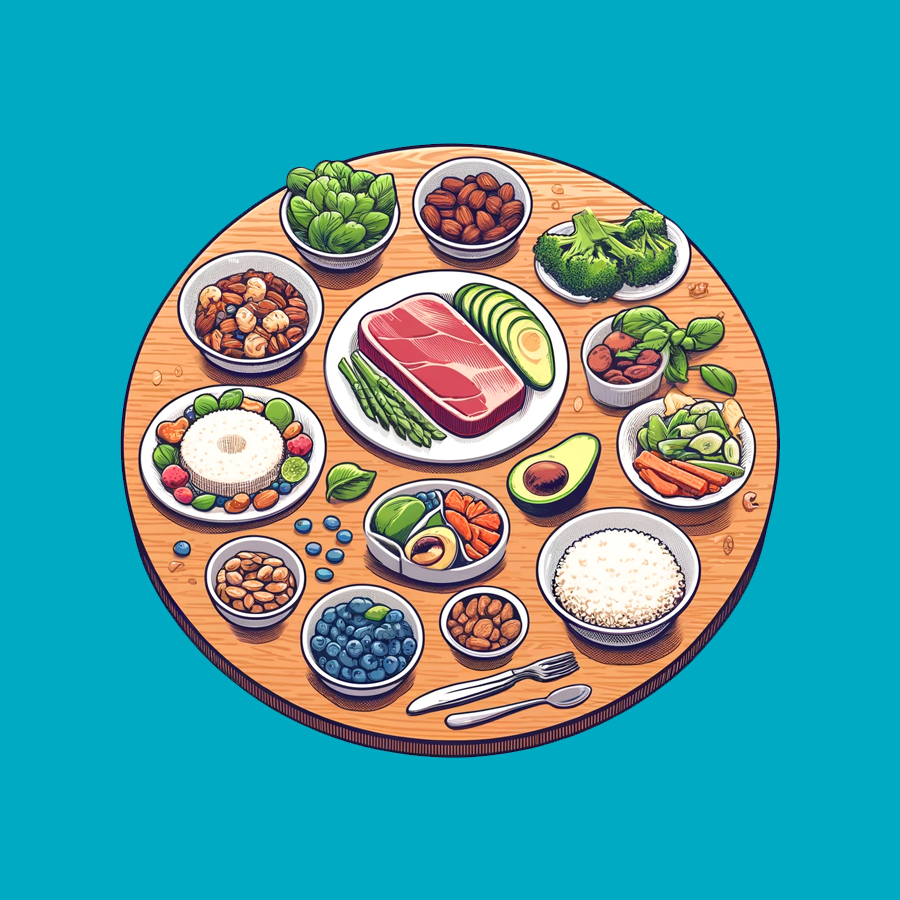In the culinary world, the conversation has notably shifted from just taste and presentation to one imbued with dietary inclusivity and health consciousness. The rise of alternative diets signifies a cultural shift where personal health and ethical considerations determine what ends on our plates. Catering to diverse dietary preferences, such as keto, paleo, gluten-free, and vegan, is no longer an option for businesses—it’s a crucial competitive advantage. In this comprehensive exploration, we’ll uncover the core pillars of these alternative regimens and provide actionable insights for the catering and restaurant industry to not just accommodate but flourish in the era of personalized diets.
Understanding the Landscape of Alternative Diets
Before you can effectively cater to alternative diets, you need to understand their core tenets and the reasons behind their popularity. Each diet emerges from unique principles, whether it’s the gluten aversion in celiac disease, the low-carb essence of keto, or the ethical foundations of veganism. Here’s a closer look at the most prevalent alternatives:
Keto
Characterized by a high-fat, low-carbohydrate profile, the ketogenic diet has garnered a loyal following for its promise of weight loss and enhanced mental clarity. Foods rich in healthy fats and proteins are staples, while sugar and most carbs, particularly those with a high glycemic index, are off the menu.
Paleo
Based on eating like our ancestors, the paleo diet focuses on whole foods, mainly those obtained by hunting and gathering. This diet omits processed food, grains, and dairy and champions meat, fish, nuts, and fresh fruits and vegetables.
Gluten-Free
A gluten-free diet is imperative for those with celiac disease or gluten sensitivity. Gluten, a composite found in grains like wheat, can cause severe digestive issues. People following this diet must be vigilant about cross-contamination and read labels closely.
Vegan
More than just a diet, veganism implies a lifestyle devoid of animal products, including meat and dairy, as well as ingredients like gelatin and honey. Many follow this diet for ethical reasons, eschewing any consumption that could harm animals or the environment.
By understanding the motivations behind these diets, your business can start tailoring menus and experiences with empathy and precision.
Menu Makeovers for the Modern Diet
Now that you’ve acquainted yourself with the diets, it’s time to re-envision your menus to be more inclusive. This doesn’t mean a complete overhaul; it’s about strategic adjustments and thoughtful additions that can widen your customer base. Here are some menu makeover tactics for each of the prominent diets:
Keto
- Good Fats Are Your Friend: Offer dishes rich in sources of good fats such as avocados, olive oil, coconut oil, and nuts.
- Protein Power: Highlight high-quality, grass-fed meats and organic, free-range poultry central to the keto diet.
- Veggie Varieties: Expand vegetable options to include low-starch choices like leafy greens, cruciferous vegetables, and those high in fiber.
Paleo
- Back to Basics: Promote dishes made from ingredients that haven’t been processed or diluted with additives.
- Seafood Selections: Since seafood was a staple for Paleolithic people, it features a variety of fresh, sustainable seafood dishes.
- Sweet Treats: Sub sugar with natural sweeteners like honey or maple syrup for those occasional indulgences.
Gluten-Free
- Safely Sourcing Ingredients: Ensure robust kitchen protocols to avoid cross-contamination and invest in staff training to understand the severity of gluten-related issues.
- Innovative Grains: Explore beyond traditional wheat and offer dishes made from gluten-free grains like quinoa, amaranth, or rice.
- Celiac Safe Zone: Designate celiac-safe menu items, using them as a selling point for gluten-conscious customers.
Vegan
- Plant-Based Proteins: Showcase dishes rich in beans, lentils, tofu, and tempeh as satisfying protein sources.
- Super Side Dishes: Elevate the profile of vegetable-based side dishes into vibrant and filling options.
- Creative Substitutions: Experiment with innovative vegan cheese, butter, and egg substitutes in baked goods.
In all these strategies, clear communication through menu labeling and staff guidance is critical to ensuring that patrons can make informed choices.
Technological Aids for Diet Diversity
Technology is a critical ally in managing the complexities of catering to diverse diets, from menu management software to inventory tools that track allergens and alternatives. Here are a few ways technology can help your business keep up with these dietary trends:
Menu Management Software
Investing in a menu management system that allows for dynamic updates and clever filtering can help customers easily find dishes that fit their dietary needs. This software can also provide valuable insights into which menu items are popular among different diet groups.
Allergen Tracker
An allergen tracker can be a real-time savior, ensuring that dishes remain free of unwanted ingredients. This tool may prevent kitchen mishaps and save precious time spent scrutinizing labels.
Online Ordering
In the age of convenience, robust online ordering platforms that allow customers to specify dietary needs and preferences can be a game-changer. Seamless online experiences ensure repeat business and positive reviews.
Social Listening and Trend Analysis
Staying on top of dietary trends through social listening can give you an edge in spotting the next big thing before it becomes mainstream. Use tools to track conversations around diet buzzwords, and be ready to adapt your offerings accordingly.
Creating an Inclusive Culinary Environment
It is crucial to ensure that every team member understands the importance of catering to alternative diets. This requires a cooperative effort from the kitchen to the front of the house.
Staff Training
Invest in comprehensive training programs that inform and upskill your staff about the various diets, their implications, and the need for consistent quality and handling.
Specialized Chefs
Consider having specialized chefs or a team member who’s a dietary expert. They can be responsible for menu development, staff training, and oversight of nutritional needs in the kitchen.
Inclusivity Champions
Designate team members passionate about dietary inclusivity to be spokespersons for your business. They can engage with customers, oversee special requests, and promote your business ethos.
Marketing and Communication Strategies
Your efforts in accommodating alternative diets will yield results if you effectively communicate them. Marketing these strategies is as important as implementing them. Here’s how to do it effectively:
Social Media Campaigns
Use your digital platforms to showcase unique diet-friendly dishes, customer testimonials, and behind-the-scenes looks at your dietary inclusivity efforts.
In-Store Materials
Transparent, attractive in-store materials highlighting your varied menu options can improve the dining experience for all customers.
Customer Education
Host events, workshops, or tasting sessions that educate your customers about your dietary choices. This will not only promote your business but also foster a sense of community.
Partnerships with Influencers
Strategic partnerships with influencers who champion the diets you cater to can broaden your reach and add credibility to your efforts.
Enhancing the Dining Experience
Beyond the dietary elements of your business, the overall experience you offer can set you apart. Whether it’s streamlined service, inviting aesthetics, or a focus on sustainability, your supplementary offerings can enhance your establishment’s reputation.
Aesthetics and Atmosphere
The restaurant’s ambiance or the catering venue’s design can significantly enhance your patrons’ experience. Pay attention to interior design, lighting, and overall aesthetics.
Personalization and Customization
Allowing patrons to customize their orders to align with their dietary needs can be a powerful strategy. It ensures a memorable experience and can lead to higher customer satisfaction.
Sustainable Practices
More often than not, those committed to alternative diets also value sustainability. Implementing eco-friendly practices can be as appealing as your menu options.
Measuring Success
Lastly, it’s essential to measure the success of your foray into catering to alternative diets. This can help you fine-tune your strategies and continually improve your offerings.
Customer Feedback
Regularly solicit customer feedback on your unique diet options through surveys, comment cards, and online reviews.
Sales Data
Analyzing sales data can give you a clear picture of which dishes are popular and which dietary segments are growing.
Staff Insights
Being at the heart of operations, your team members can provide valuable insights into how various diet accommodations work.
Industry Benchmarks
Keep an eye on how your business compares to industry benchmarks, and stay flexible in your approach.
By monitoring these indicators, you can ensure that your efforts to cater to alternative diets are profitable and sustainable in the long run.
In conclusion, the rise of alternative diets presents an opportunity for culinary businesses to innovate, engage with a more health-conscious clientele, and carve a niche in a competitive market. Your business can adapt and thrive by understanding the dietary philosophies, updating your menus, leveraging technology, fostering a supportive environment, marketing effectively, enhancing the overall experience, and measuring success. It’s a golden era for diversifying your plates—embrace it and watch your enterprise flourish.

